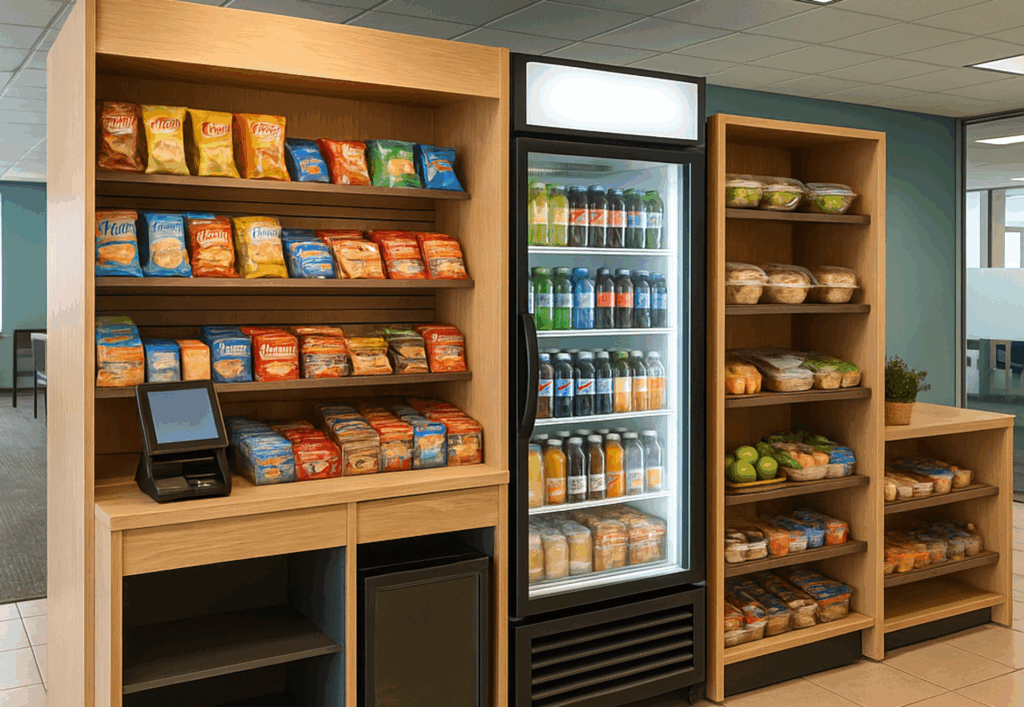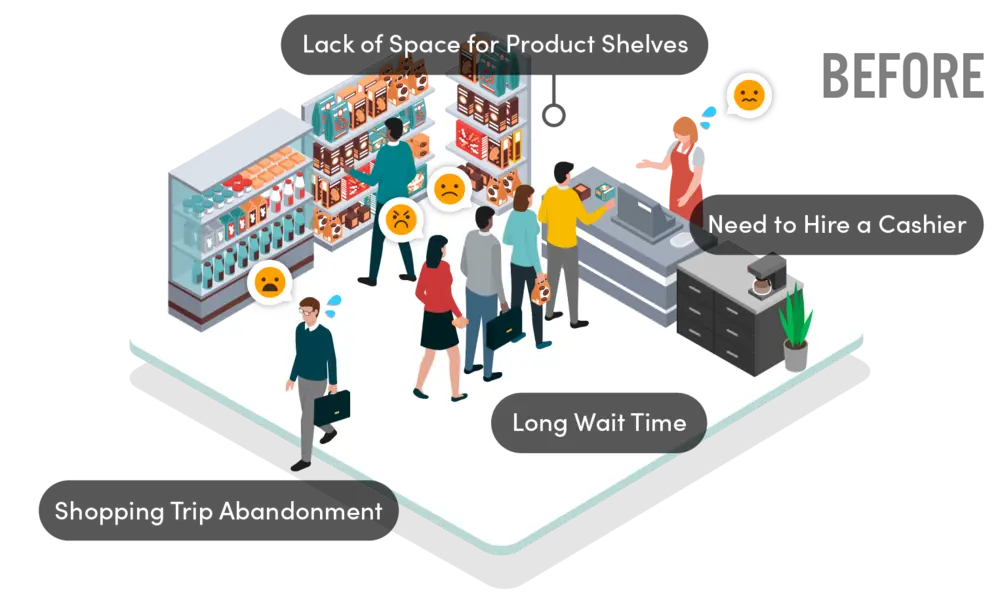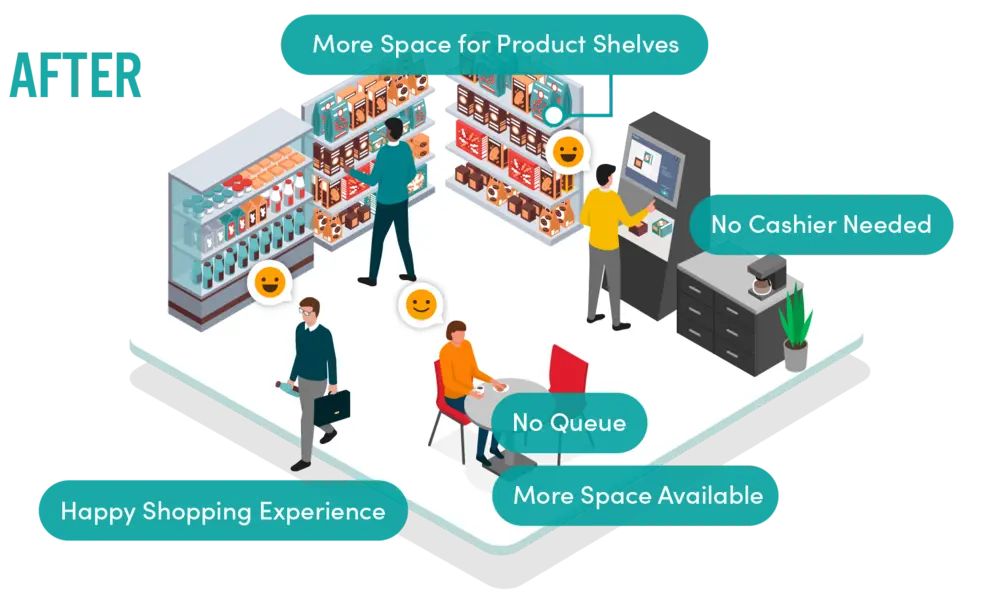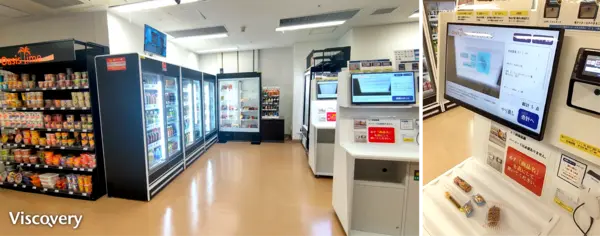
The Evolution and Future of Micro Markets
May 28, 2024
In the areas such as office buildings, campuses, hospitals, and remote locations like factories and logistics centers, we can often find a space known as a micro market. These small-scale convenience stores offer retail goods, allowing people in these areas to easily purchase essentials, food, drinks, and snacks. With their flexibility, self-service model, and 24/7 operation, micro markets are increasingly being adopted by business owners and operators.
The Origin of Micro Markets
Micro markets can be considered an evolution of the vending machine. They have grown from single-unit self-service machines to spaces where consumers can self-checkout an array of products. This transformation has taken over 35 years. The first vending machine appeared in 1867, designed to sell stamps. By the early 1880s, the first commercial coin-operated vending machines in London sold postcards, paper, and envelopes at train stations and post offices. 1
In June 1895, the concept of vending machines entered the food industry. A company in Berlin called Quisisana created the world’s first fully automated restaurant, enabling customers to use coins to purchase pre-prepared meals. This concept spread from Europe to the United States, and in 1902, Horn & Hardart opened America’s first fully automated restaurant in Philadelphia after acquiring these vending machines from Quisisana. The concept quickly gained popularity, leading Horn & Hardart to open several additional locations. 2
People started appreciating the convenience of self-checkout, which eventually evolved into today’s micro market, where an entire space is dedicated to self-service shopping.

(Image by HAI)
Related Article: AI Revolutionizes Haidilao “Hi Noodle” Self-Checkout Experience
The Applications of Micro Markets
As small-to-medium-sized self-service retail spaces, micro markets offer consumers a more convenient shopping experience characterized by self-service, 24/7 operation, diverse product offerings, flexible locations, and technology-driven services. Consumers can select their items and use a self-checkout system to pay, reducing wait times.
Despite their smaller size, micro markets offer a comprehensive range of products. Some operators even customize product selections based on consumer demand in specific locations. Their self-service and unattended model make them particularly attractive to operators in office buildings, schools, hospitals, and factories.
In office buildings, employees often need quick meal solutions. Micro markets provide the convenience of purchasing essential items without leaving the building, enhancing work efficiency and supporting employees. Some employers even offer monthly snack allowances, allowing employees to select snacks and drinks within a budget using points. Micro markets can be set up in hallways, specific areas, or in employee break rooms.
In schools, both students and staff have diverse daily needs. Micro markets can supply a variety of products on campus for quick purchases, such as stationery (pens, notebooks, tape) and personal hygiene items (toothbrushes, toothpaste, contact lens solution, wet wipes, cotton swabs and more).
For factory or hospital employees, who often have fixed and tight schedules, micro markets meet their daily shopping needs promptly, especially for night shift staff. In remote areas where large supermarkets are costly and challenging to operate, micro markets effectively fill the gap, providing essential goods to local residents.


Technological Trends in Micro Markets
Micro markets can be viewed as the pioneers of unmanned stores, using the latest technology to improve operational efficiency and customer service.
For example, mobile payments have significantly enhanced payment convenience, and data analytics help operators better understand consumer needs.
Recently, some micro market operators have even integrated AI image recognition technology with the self-checkout system, as seen in a department store in Sendai, Japan, which transformed its employee break area into a micro market.
With a camera installed at the self-checkout counter, the system can automatically identify all items for checkout and send the information to an existing self-checkout machine, generating a list for the consumer to confirm before payment.
AI brings great convenience to consumers, eliminating the need to scan each item’s barcode, making the process simple and intuitive, and streamlining the checkout experience.

Related Article: Department Store Micromarket Innovates with AI Self-Checkout
The Future of Micro Markets
With technological advancements, the future of micro markets holds various possibilities. Using IoT technology and big data analytics, micro markets can achieve smart restocking, automatically ordering based on sales and inventory levels to prevent stockouts. AI algorithms and big data analysis can customize product recommendations and promotions based on each consumer’s purchase history and preferences.
In addition, future micro markets may introduce more self-service machines, offering services like on-site cooking and freshly brewed coffee, making the overall service more comprehensive. As environmental awareness rises, micro markets may also strive for more eco-friendly and sustainable practices, such as using biodegradable packaging materials and promoting paperless receipts.
Amid the global labor shortage, the unmanned and self-service features of micro markets offer a solution to workforce challenges. With the integration of AI and other new technologies, the operational efficiency and service quality of micro markets can be further enhanced, potentially playing a more significant role in the retail industry and becoming an indispensable part of our daily life.
(The featured image was generated using ChatGPT’s AI tools for illustrative purposes only.)
[References]
1 Bellis, Mary. “The History of Vending Machines.” ThoughtCo, 3 December 2019, https://www.thoughtco.com/the-history-of-vending-machines-1992599.
2 Kim, Colleen. “A Dining Experience to Remember: A Brief History of the Automat.”HAI, https://www.historyassociates.com/automat/.

